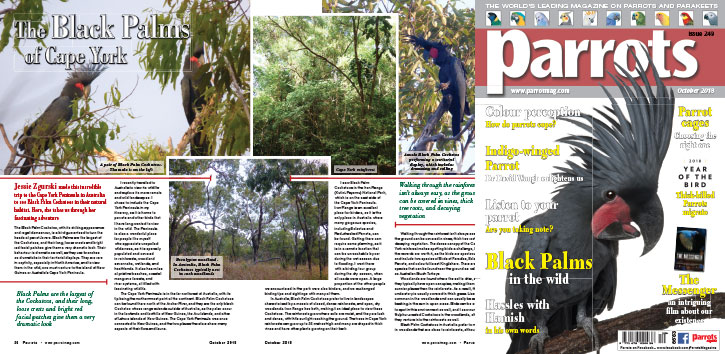
By Jessie Zgurski
The Black Palm Cockatoo, with its striking appearance and regal demeanour, is a bird guaranteed to turn the heads of parrot-lovers. Black Palms are the largest of the Cockatoos, and their long, loose crests and bright red facial patches give them a very dramatic look. Their behaviour is dramatic as well, as they use branches as drumsticks in their territorial displays. They are rare in captivity, especially in North America, and to view them in the wild, one must venture to the island of New Guinea or Australia’s Cape York Peninsula.
I recently travelled to Australia to view its wildlife and explore its more remote and wild landscapes. I chose to include the Cape York Peninsula in my itinerary, as it is home to parrots and other birds that I have long wanted to view in the wild. The Peninsula is also a wonderful place for people like myself who appreciate unspoiled wilderness, as it is sparsely populated and covered in rainforests, woodland savannahs, wetlands, and heathlands. It also has miles of pristine beaches, coastal mangrove forests, and river systems, all filled with fascinating wildlife.
The Cape York Peninsula is in the far northwest of Australia, with its tip being the northernmost point of the continent. Black Palm Cockatoos can be found there north of the Archer River, and they are the only black Cockatoo whose range extends outside of Australia, as they also occur in the lowlands and foothills of New Guinea, the Aru Islands, and other off-shore islands of New Guinea. The Cape York Peninsula was once connected to New Guinea, and the two places therefore share many aspects of their flora and fauna.
Buy Now!

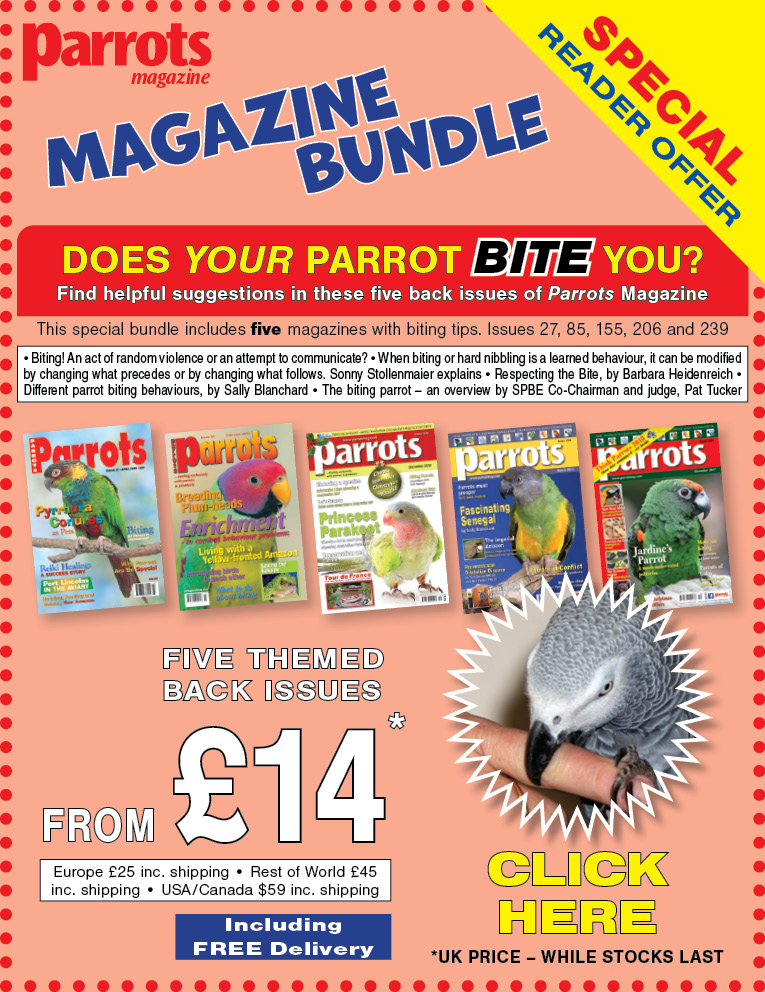
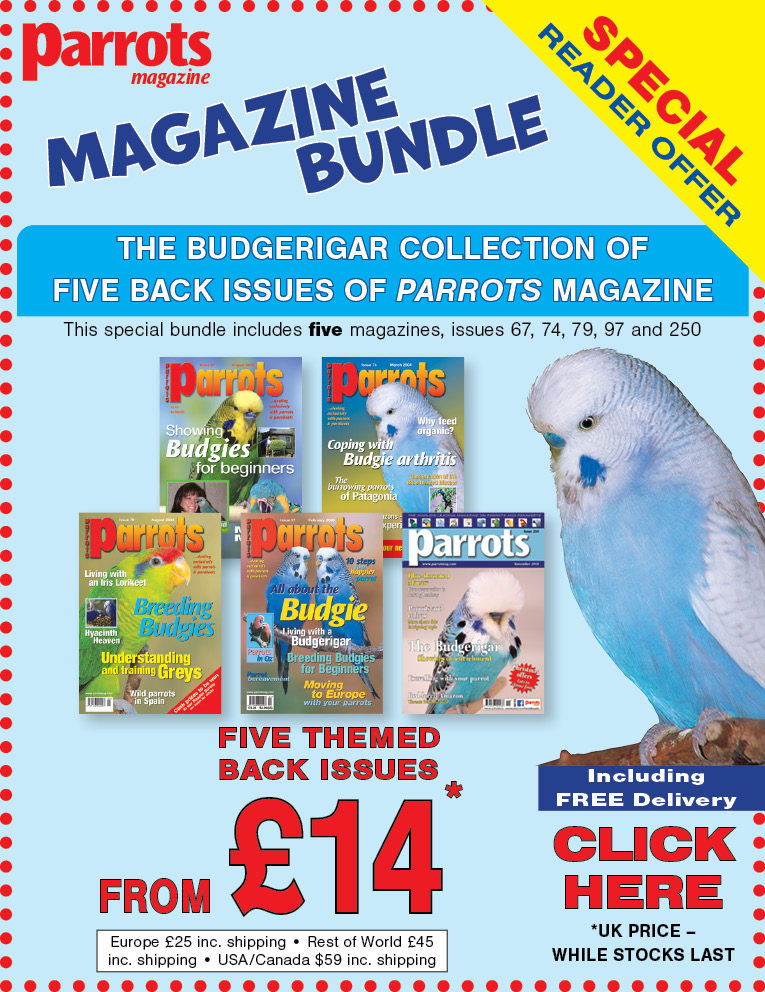
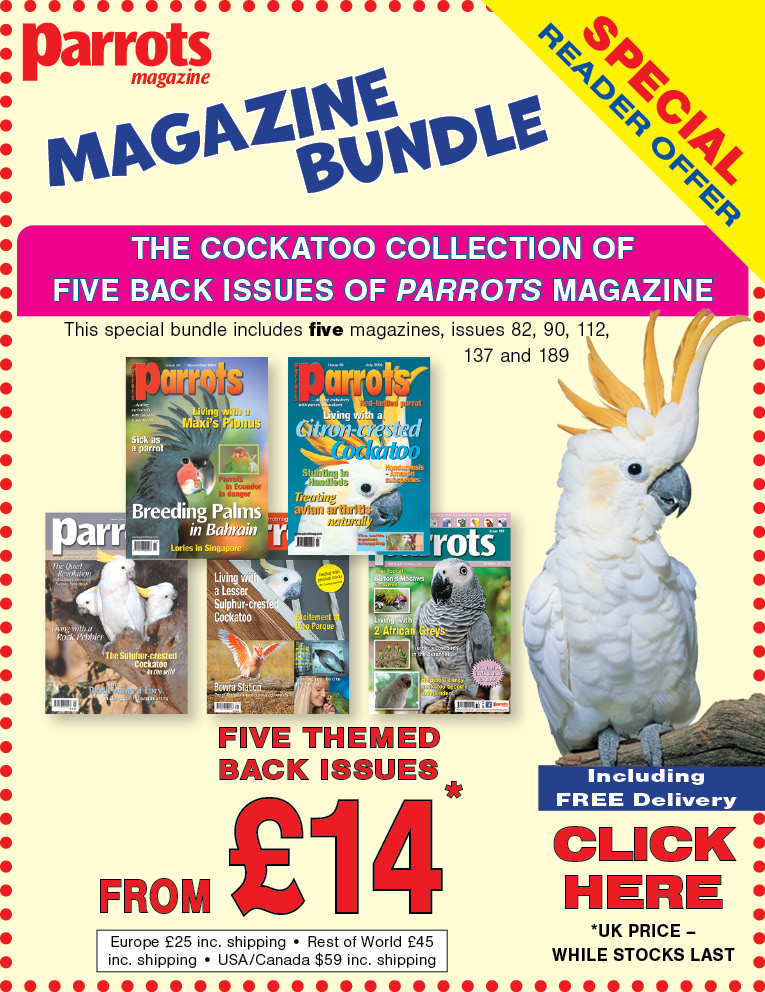
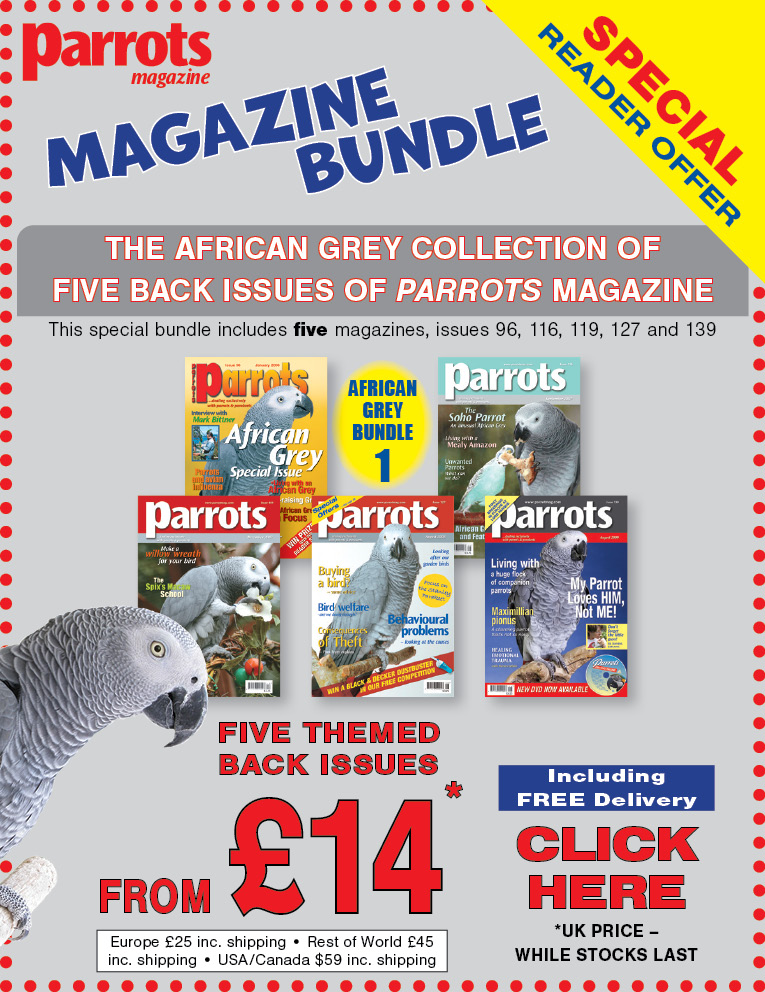

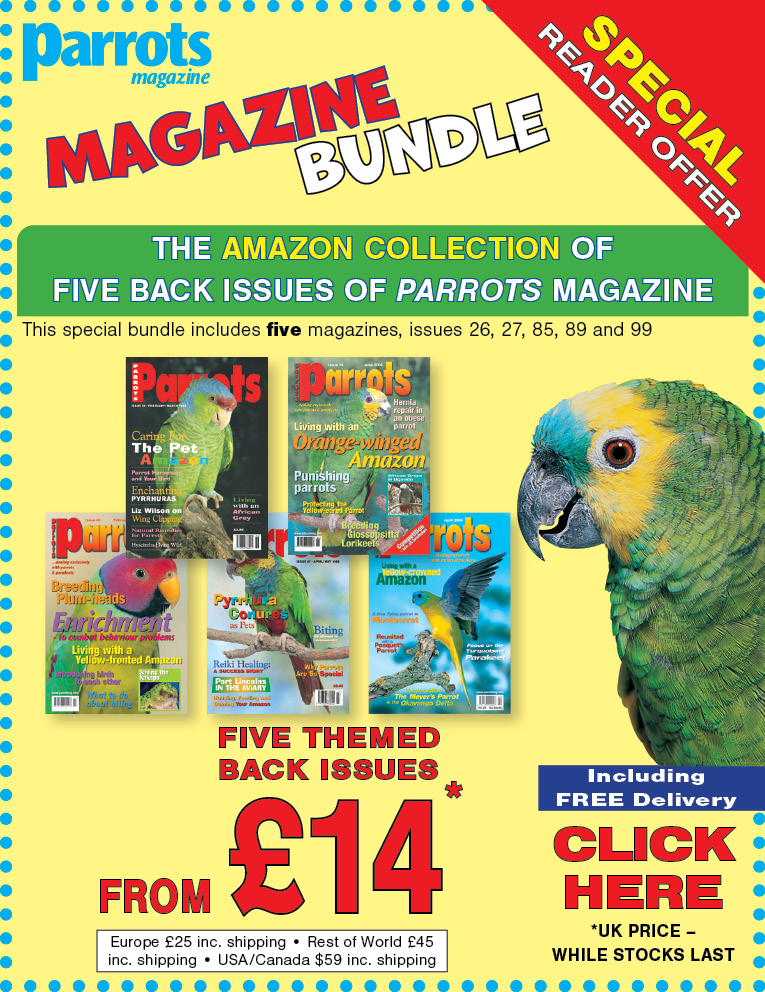

Parrot Chat
Buyers Guides
Breeding articles